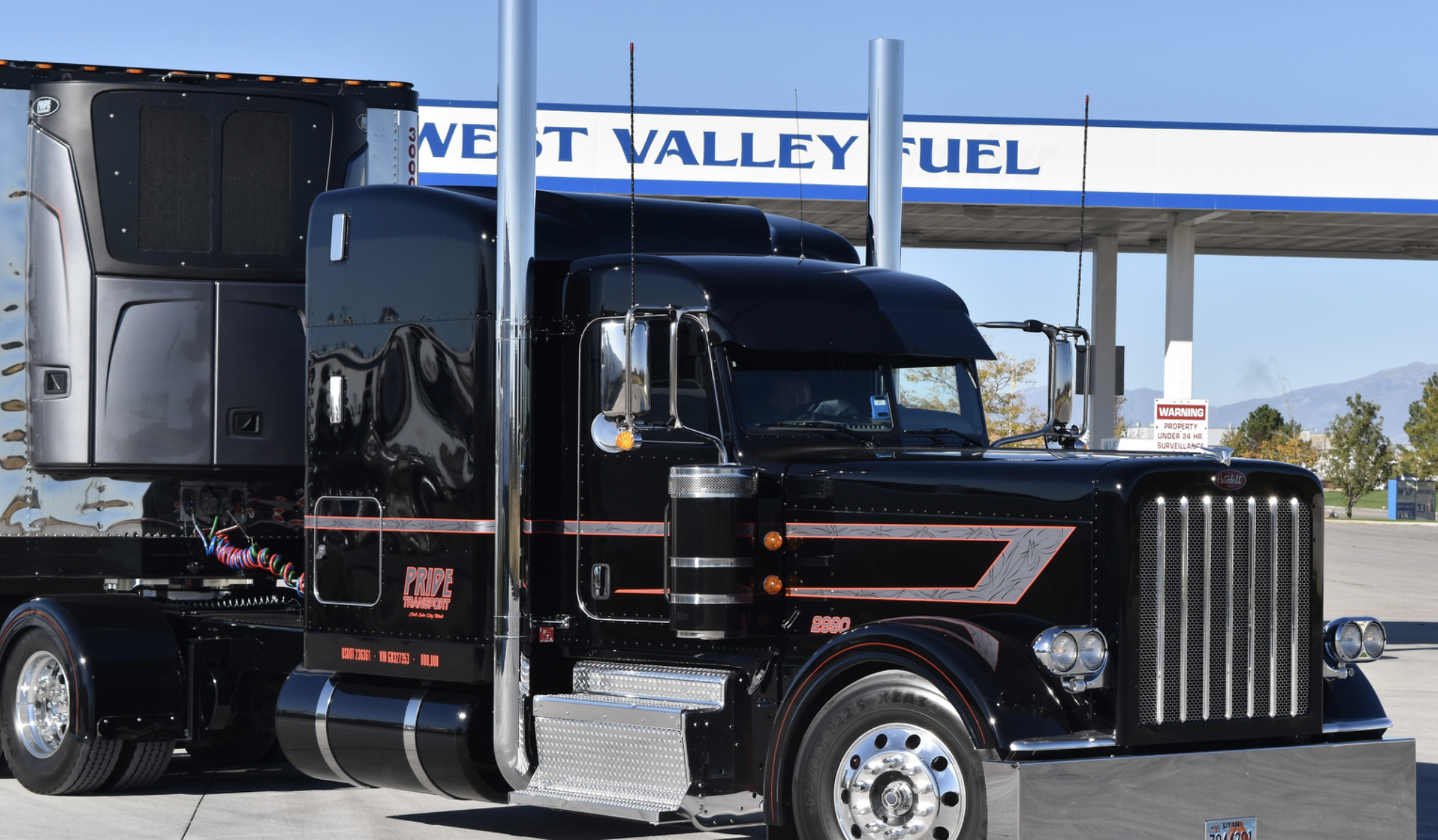by Pride Transport | Apr 11, 2025
Trucks are an essential part of the transportation industry, but they are largely misunderstood. In fact, while most people may realize that these are large vehicles with special requirements to drive them, they may not understand the complexity, power, weight, or size when compared to others on the road.
Semi-trucks have unique characteristics; some are extremely long, some have very large fuel tanks, and others use the newest artificial intelligence (AI) technology to protect drivers and others on the road. There is always something new and interesting to learn about trucks and the drivers who are behind the wheel in this industry.
To give you more insight that can give you an appreciation for how these vehicles differ from others, here are 10 facts that you may not know about semi-trucks.
10 Shocking Facts About Trucks
Semi-trucks are in a class all their own. They are large, powerful, and have unique mechanical properties that set them apart from other vehicles.
While most people might think they know all there is to know about semis, the reality is that there are some unique facts that people often don’t. From the lifespan of an average truck to the total number of miles a driver completes each year, these facts can be surprising.
Here are 10 interesting facts you should know about the vehicles that transport goods all across the U.S.
1. A Semi-Truck’s Fuel Tank Can Hold Over 300 Gallons of Diesel
Semi-trucks have to travel long distances, and their sheer size means they don’t get great gas mileage. A standard semi gets six to eight miles per gallon, so large fuel tanks are a necessity if drivers don’t want to stop every few miles. Generally, trucks have fuel tanks ranging from 100 and 300 gallons to make up for lower fuel efficiency.
2. It Takes a Semi-Truck Over Two Football Fields To Stop
Most people realize that a semi can’t stop on a dime, but did you realize that it takes over the length of two football fields to stop? Braking distance will depend on the vehicle’s weight, the current road conditions, and the speed at which it’s traveling when it begins to slow. However, keep in mind that a semi’s braking distance will always be longer compared to smaller cars and trucks.
3. Some Trucks Have Over 1 Million Miles on Them
When you think of buying a vehicle, you probably think 100,000 miles is a lot. Well, in the trucking industry, it’s not uncommon for a truck to surpass a million miles on the odometer. With an average lifespan of 200,000 for a typical car, trucks last up to five times longer!
4. Drivers Average Over 100,000+ Miles Per Year
It’s a good thing that trucks can last a million miles or more, because the average truck driver puts at least 100,000 miles onto the vehicle each year. Compare that to a commuter with an average mileage of 13,500, and you get a great perspective on just how much truck drivers are really behind the wheel and how much maintenance goes into their vehicles.
5. An 18-Wheeler Uses Around 20,500 Gallons of Fuel a Year
Truck driving is one of the largest occupations in the United States, and that is reflected in the sheer number of people working as drivers. With over 3.6 million truck drivers in the USA, around 73.8 billion gallons of fuel are used by this industry alone each year.

6. Trucks Have 18 Gears (or More!)
Many semi-trucks have 18 gears, and some of them have more. The average range is between nine or even twice as many gears, which is significant compared to the five- or six-speed transmissions found in passenger vehicles.
7. Some Trucks Use Advanced Sleep Detection Technology
Falling asleep behind the wheel is a serious risk for drivers, but many semis have tools in place to prevent it. Trucks that use advanced sleep detection technology have artificial intelligence that will detect drowsy driving and let drivers know when they need to take a break. The Driver Drowsiness with Driver Monitoring System (DMS) Sensor by Netradyne and aims to reduce drowsy driving. Drowsy driving is a factor in around 40% of all large truck collisions.
8. The Longest Semi-Truck in the USA Is the “Red Giant”
A typical semi truck has a cab and trailer. But did you know that the longest 5th wheel tractor in the USA, a 1990 Diamond Reo, has a wheelbase of almost 11 meters? That makes it about as long as five cars back to back.
9. Trucks Are Involved in Only a Small Percentage of Highway Accidents
Many people fear getting into a collision with a semi-truck, and there is a common misconception that truck drivers are responsible for a large portion of the crashes that happen on the highway. Interestingly, around 80 percent of the crashes involving a truck are caused by other drivers’ mistakes, according to the American Trucking Associations (ATA). And, the most recent data from 2022 shows that large trucks account for around 6 percent of all vehicles involved in fatal crashes.
10. The Trucking Industry Moves Over 70% of All Freight in the U.S.
By the end of 2022, the trucking industry was responsible for moving around 72.6% of all the freight in the United States. In 2024, it was estimated that the industry moved 11.27 billion tons of freight, a slightly higher percentage of around 72.7%. In 2025, that number is expected to rise again.
These 10 facts are some of the most interesting to know about trucks and the trucking industry. With so many truck drivers operating on the road today, understanding more about these helpful vehicles and the people who drive them gives you a whole new level of appreciation for what they do each day.
Build Your Career and Drive With Pride
At Pride Transport, we’re proud to be a part of an amazing industry with a community of drivers who take pride in all they do. To learn more about the industry, visit our blog. If you’re ready to find your next job, view our job openings.
